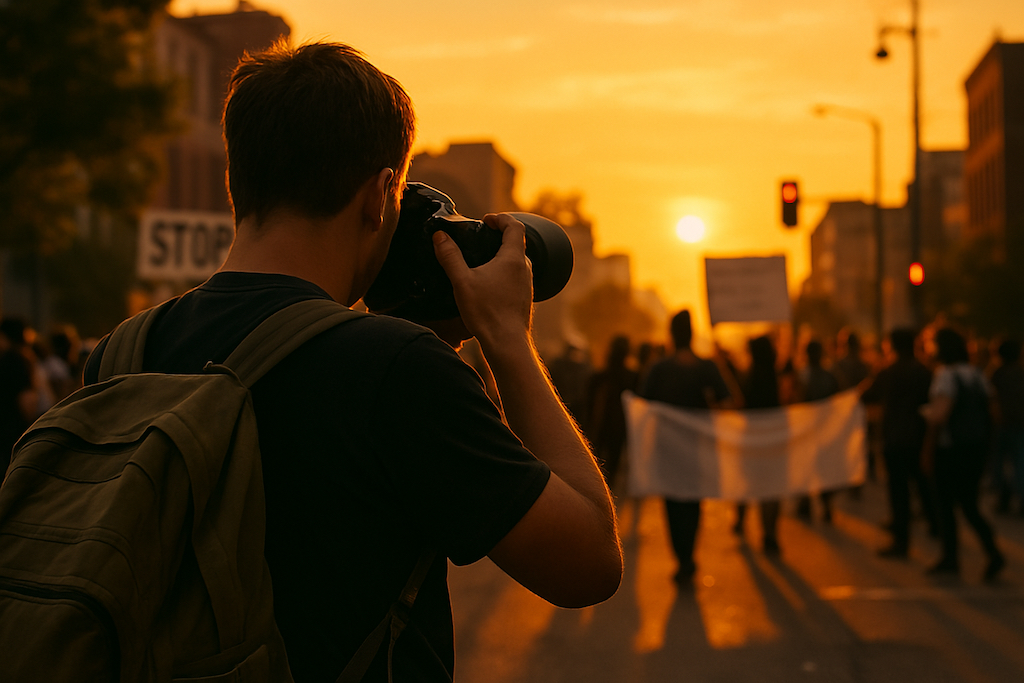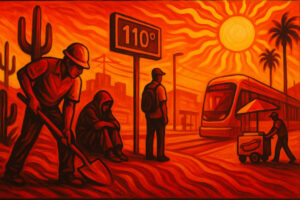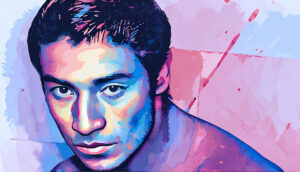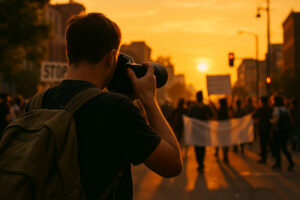PHOENIX – After decades on the job, I’ve seen photojournalism evolve through film rolls, digital revolutions, smartphones, and AI. The heart of the craft, however, hasn’t changed: be there, tell it true, earn the trust.
These photojournalism notes distill lessons from years in the field—designed for anyone with a camera and a drive to tell real stories.
Presence is power – Show up early, stay late
Award-winning images rarely happen on cue. The unscripted moments—the tension before a press conference, the embrace after a protest—often tell the deeper story. Don’t chase spectacle; chase substance. Arrive before the story begins and stick around when others pack up.
Pro tip: Learn to sense the room. Anticipate change in energy, body language, and emotion.
YOU MIGHT ALSO LIKE → Muralism today: still a catalyst for social change?
Prepare like a reporter – Do your homework
Every assignment deserves prep. Research the people, the history, the stakes. This doesn’t just make you sharper—it builds credibility with your subjects and editors alike. Know the timeline, the flashpoints, and the local nuance.
Field example: Covering a political rally? Study the key players, opposition groups, and previous coverage. Context = better storytelling.
Human first, photographer second – Be invisible, be human
Yes, you’re documenting. But you’re also in someone’s space—often during vulnerable moments. Move with empathy. Sometimes it’s a quiet nod, other times a quick hello or explanation of what you’re doing. You’re not a fly on the wall—you’re a witness with purpose.
Golden Rule: If you wouldn’t want to be photographed in that moment, ask yourself why. Then decide if it’s worth it—and how to do it right.
The ethics of a frame – Understand the Power of a Single Image
One image can move millions. That power is sacred. Don’t stage. Don’t mislead. Don’t flatten nuance for drama. Your work becomes part of the record.
Note: Live by the “no manipulation” code. It’s simple: if you moved it, changed it, or asked for it—it’s no longer journalism.
Speed with accuracy – File fast, file clean
Deadlines are real. But speed means nothing if you get the facts wrong. Double-check names, locations, spellings, and chronology. Your caption is just as important as your frame—it’s what turns a photo into journalism.
Checklist before sending:
Correct spelling and ID?
Time/date accurate?
Context clear?
Ethical concerns addressed?
Collaborate with the desk – Make friends with the desk
Good communication can mean the difference between a front-page placement and a missed opportunity. Editors are not gatekeepers—they’re amplifiers. Make their job easier by sending clean captions, timely updates, and heads-up about what’s coming.
Inside tip: A short message about what you’re seeing in the field—before images even come in—can help editors prepare coverage or plan follow-ups.
Think like a storyteller – Carry more than gear
Your camera isn’t the story—you are. Great photojournalists think visually, report actively, and follow their instincts. If you see a hole in a narrative, ask. If the light hits just right, shoot. Trust your gut—but back it up with knowledge.
Develop these muscles:
Visual composition
Narrative flow
Empathetic interviewing
Ethical decision-making
Protect the work – Back up religiously
Murphy’s Law is always lurking. Files will get corrupted. Cards will fail. Cloud storage will crash. Build a habit of redundant storage.
Backup routine:
First copy on location
Second copy on external drive
Third in the cloud (secure and encrypted)
Care for the storyteller – Stay physically and mentally fit
Photojournalism can be emotionally and physically taxing. Long hours, adrenaline, and moral complexity take a toll. Be proactive about mental health. Find peers you can talk to. Move your body. Eat real food. Rest.
Permission granted:
It’s okay to take time off. It’s okay to say no to an assignment. You can’t pour from an empty lens.
Evolve without losing yourself – Never stop learning
The tools of photojournalism change —your instincts don’t. Whether it’s drones, AI, or immersive storytelling, stay curious. Attend workshops. Follow the next generation. But always come back to the basics: light, moment, composition, truth.
Self-assignment:
Once a month, shoot something just for you. No editor. No deadline. Just curiosity.
Final frame: one for the road
If someone lets you into their life during a vulnerable moment, honor it. You’ve been entrusted with something sacred. Don’t just capture it—care for it.
One line I’ve carried with me over the years—a phrase that took shape as I reflected on how I work—still guides how I move through the field: “Observe like a hawk, move like a coyote, shoot like it matters.“
Photojournalism in action: View my portfolio
© 2025, Eduardo Barraza. All rights reserved.





